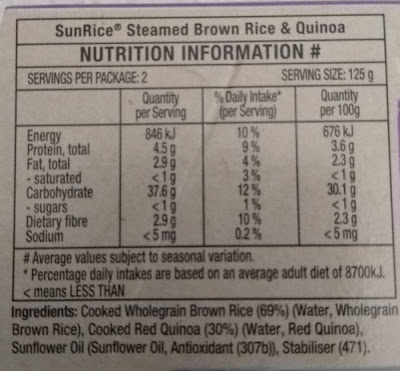Brown rice is healthy and great for you, but its nutrition depends upon who cooks it. The nutritional value of any food depends on how it is cooked, so brown rice nutrition is not the same as other types of grain. If you eat mostly rice and do not cook it, your intake of nutrients will be reduced because most of the nutrition is lost during the cooking process. If you cook brown rice frequently, you can eat as much as you want. If you eat it less often, you will not get enough nutrition.
There are several ways to cook brown rice nutrition. Three of them are shown here. First, the grain can be cooked alone without added sugar or salt. Second, it can be combined with other foods such as potatoes, eggs, or tomatoes to increase its protein and fiber content.
Third, it can be served raw or lightly steamed. Fresh vegetables can provide additional vitamins and nutrients, but they can also contain lots of calories and fat. In order to maintain good health, you should reduce the amount of calories you eat and increase the amount of vitamins and minerals you get from vegetables and fruits. This is one way to obtain good brown rice nutrition.
First, let's take a look at cooked brown rice. There is some debate over whether this type of grain is healthier than other kinds. If you have trouble finding nutty flavor in your favorite rice dishes, like many people, you may want to try this grain. It has the same nutritional benefits as other types. Like other kinds of brown rice, it contains more vitamin A than other kinds of grains (although not as much as white rice). It also contains more iron than other kinds of grains (and a little less than red rice).
Second, let's look at the way you cook it. Most people like cooked rice with less sugar and more protein. This is partly due to the fact that the outer layer contains a lot of fiber and contains the most vitamin A of all grains. Cooked brown rice has a slightly nutty flavor, similar to that of nutty sprouted brown rice. Because of its high nutritional value, it is recommended for both vegetarian and non-vegetarian diets.
What about brown rice that has been sprouted? Sprouted whole grains, including brown rice, have been shown to have higher amounts of both vitamin A and iron. These amounts are similar to those found in non-sprouted rice. However, they are nowhere near the rich antioxidant and higher amounts of iron and protein found in whole grains. If you are looking to eat healthy, yet retain the flavors people often remember from their childhoods, cooking brown rice (and other types of sprouted grains) would be a wise choice.
Finally, let's talk about bran layers. Brown rice contains three layers of fibrous proteins: the bran, which is healthier and more digestible; the germ or embryo, which has a longer lifespan than the bran and has a greater supply of nutrients; and the endosperm, which is what makes the grain turn brown. The germ or embryo of brown rice contains many fewer nutrients than does the bran. This makes brown rice, as well as white rice, a healthier choice for vegetarians. For this reason, brown rice contains only about half the calories of white rice and almost twice the fiber, making it a very healthy choice for vegans and vegetarians.
